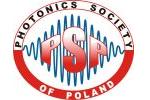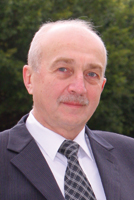| Invitation for a lecture of prof. Vladimir G. Chigrinov |

|

|

|
|
We have a great pleasure to announce an set of invited lectures of prof. Vladimir G. Chigrinov (Hong Kong University of Science and Technology, Hong Kong). Topics and dates of the lectures are as follows:
Each lecture will take place in the in The Faculty of Physics Building, at 16:15 in lecture hall no. 111. Short biography of Lecturer:
Professor Vladimir G. Chigrinov is a renowned specialist in liquid crystal optics and photonics. He graduated from the Faculty of Applied Mathematics, Moscow Technical University of Electronics and Mathematics in 1973. In 1978 he received PhD degree in Solid State Physics (Liquid Crystals) in the Shubnikov Institute of Crystallography, USSR Academy of Sciences. He became a Doctor of Physical and Mathematical Science in 1988 and obtained a degree of a Professor in 1998. From 1973 until 1996 he was a Researcher and a Leading Scientist, as well as a Head of the Division in Organic Intermediates & Dyes Institute (NIOPIK). From 1996 until 2009 he was working as a Leading Scientist in the Shubnikov Institute of Crystallography, Russian Academy of Sciences. He joined Hong Kong University of Science and Technology in 1999. Professor Vladimir G. Chigrinov is an author and coauthor of 4 books, more than 20 reviews and book chapters, 180 journal papers, 420 conference presentations and 60 patents or patent applications in the field of liquid crystals. He is a Member of the International Liquid Crystal Society and the Society for International Display (SID), as well as a member of Editorial Board of "Liquid Crystals Today", “Photonics Letters of Poland” and an Associate Editor of “Journal of the SID”. Click "Read more..." link below, to see the abstracts of the lectrures and PDF files with presentations. 1. LC: physics and applicationsThis seminar will include (i) the physical properties of liquid crystals and preparation of liquid crystal cells the most important for applications; (ii) summary of electrooptical phenomena, as a basis for liquid crystals devices; (iii) performance, manufacturing technology and addressing of passive and active matrix addressing liquid crystal displays; (iv) liquid crystal devices in optical communications and other non-display fields; (v) recent improvements in LCD performance and “hot topics” of LCD research; (vi) market analysis. The seminar is intended for a wide range of engineers, scientists and managers, who are willing to understand the liquid crystal physical properties, geometry of liquid crystal cell and characteristics of electrooptical effects to choose and/or to develop liquid crystal devices with optimal parameters. University researchers and students, who specialized in the condensed matter physics and liquid crystal device developments may also find some useful information here. Lecture_1.PDF 2. Liquid crystal photoalignment: application in Displays and Photonics We will consider the novel azo-dye photo-aligning technology: including its perspectives for future applications in liquid crystal (LC) Displays and Photonics devices. Azo-dye materials can provide a perfect uniform alignment with a sufficiently high polar and azimuthal anchoring energy, VHR and appropriate pretilt angles. The stabilized azo-dye aligning layers are thermo and UV stable. Patterned LC alignment in LCP films and LC alignment in superthin tubes and 3D surface becomes possible. Photoalignment applications in Displays, Photonics and Optics become a “hot topic” of research. Latest tendencies of photoalignment technology applications in Displays will be also considered. The advantages of LC photoalignment technology in comparison with common “rubbing” alignment methods tend to the continuation of the research in this field. Almost all the criteria of perfect LC alignment are met in case of azo-dye layers. Nowadays azo-dye alignment materials can be already used in LCD manufacturing, e.g. for the alignment of monomers in LCP films for new generations of Photonics and Optics devices such as phase retarders, polarizers and color filters. We will have a possibility to tune the alignment properties like (anchoring energy, ability of align LC materials, image sticking, light sensitivity, photo stability, reorientation speed etc.) by preparing the proper weight ratio of the azo-dye compound. Thus having the limited number of basic azo-dyes structures the continuous range of different alignment properties can be covered. Recently the new application of photoaligned technology for the tunable LC lenses with a variable focal distance was proposed. Thin photo-patterned micropolarizer array for CMOS image sensors for in-situ analysis of the four Stokes parameters of the output optical signal are also envisaged. Photoalignment is definitely the only technology, which enable non-defect LC orientation inside superthin tubes (tunable photonic crystal/liquid crystal fiber structure) and on tiny rings (Si micro-ring resonators). New optically rewritable (ORW) liquid crystal Photonics devices with a light controllable structure may include LC plane waveguides, LC polarization dependent elements, such as lenses and wave plates, LC polarization rotators and polarization controllers, light and voltage controllable diffraction gratings for optical filters etc. We are sure, that the common rubbing alignment technology will be totally replaced by a photoalignment in the near future, thus increasing the quality of LCD (http://sharp-world.com/corporate/news/090916.html). Lecture_2.PDF 3. Modeling and optimization of liquid crystal displays (LCD) and Photonics devices. Modeling and optimization of liquid crystal displays (LCD) and Photonics devices will be considered. The procedures of solving the LC director distribution in electric field as well as Maxwell equations of the light propagation in anisotropic LC media will be clarified. The examples of new LCD configurations based on optimization results will be highlighted. Modeling Universal System of Liquid Crystal Displays (MOUSE -LCD) software will be demonstrated for the calculation of LC electrooptical behavior and optimization of the new LCD prototypes. Modeling and optimization of LC photonics elements: optical switches, polarization controllers, polarization rotatores, attenuators etc. will be also considered. The concrete examples of LCD modeling and optimization will be highlighted. Lecture_3.PDF 4. Fast switchable liquid crystal cells for displays and photonics applications The response time of liquid crystal displays is still inferior to the existent competing technologies, such as plasma display panels (PDP) or organic light emitted diodes (OLED). The target LC cell response time for a field sequential color (FSC) and 3D displays should be less than 1 ms (240 Hz frame frequency) to provide a high resolution, low power consumption and extended color gamut liquid crystal displays (LCD). Fast electrooptical modes in nematic LC, such as optically compensated birefringence (OCB), no bias bend (NBB) or stressed splay twist (SST) modes do not seem to be very helpful to meet the new requirements for FSC and 3D display applications. Some hope still exists, when the double cell configurations are used. One of the candidates for fast switching LC materials is a blue phase. However, these materials still suffer a relatively narrow temperature range, too high applied voltage and a hysteresis in the electrooptical response. Another candidate is a flexoelectric mode in short pitch cholesteric LCs. The mode shows a high dependence of the response on the LC alignment quality as well flexoelectric LC modules, which are mostly responsible for the high contrast ratio and fast switching time. Fast switching ferroelectric liquid crystal (FLC) displays (FLCD) is a good candidate for the new generation of LC display and photonics devices, which proved to be better in response time, especially deformed helix ferroelectric (DHF) mode and its modifications, which provide a high contrast, and extremely fast switching time for a very low applied voltage. Lecture_4.PDF |
| < Prev | Next > |
|---|




